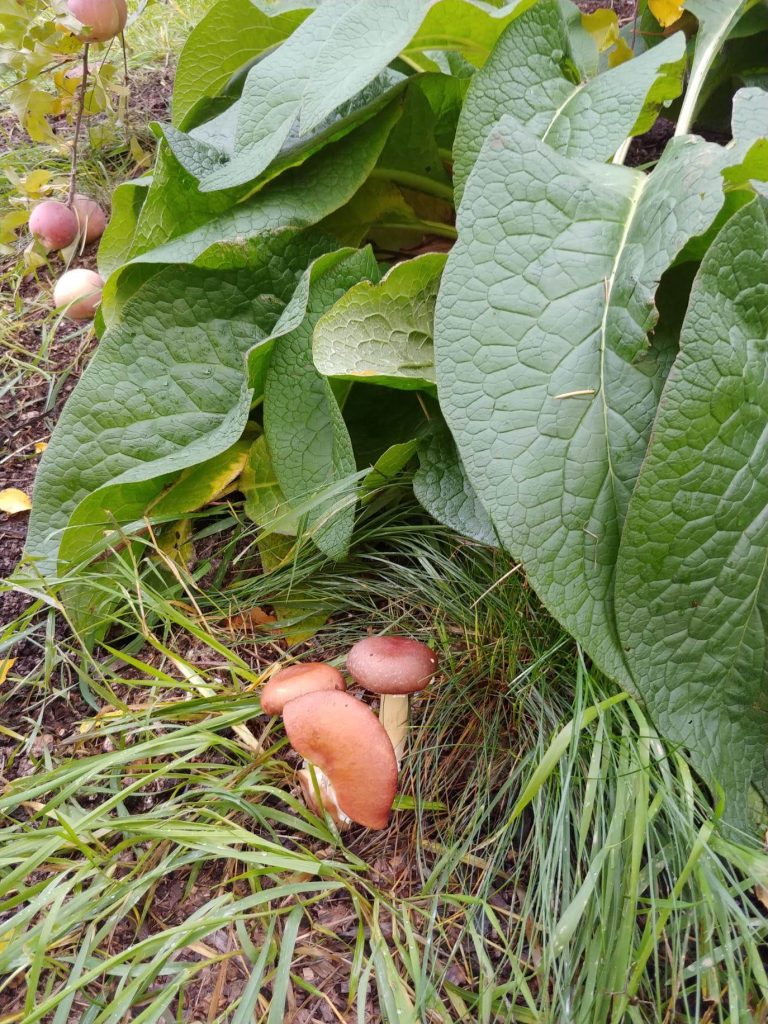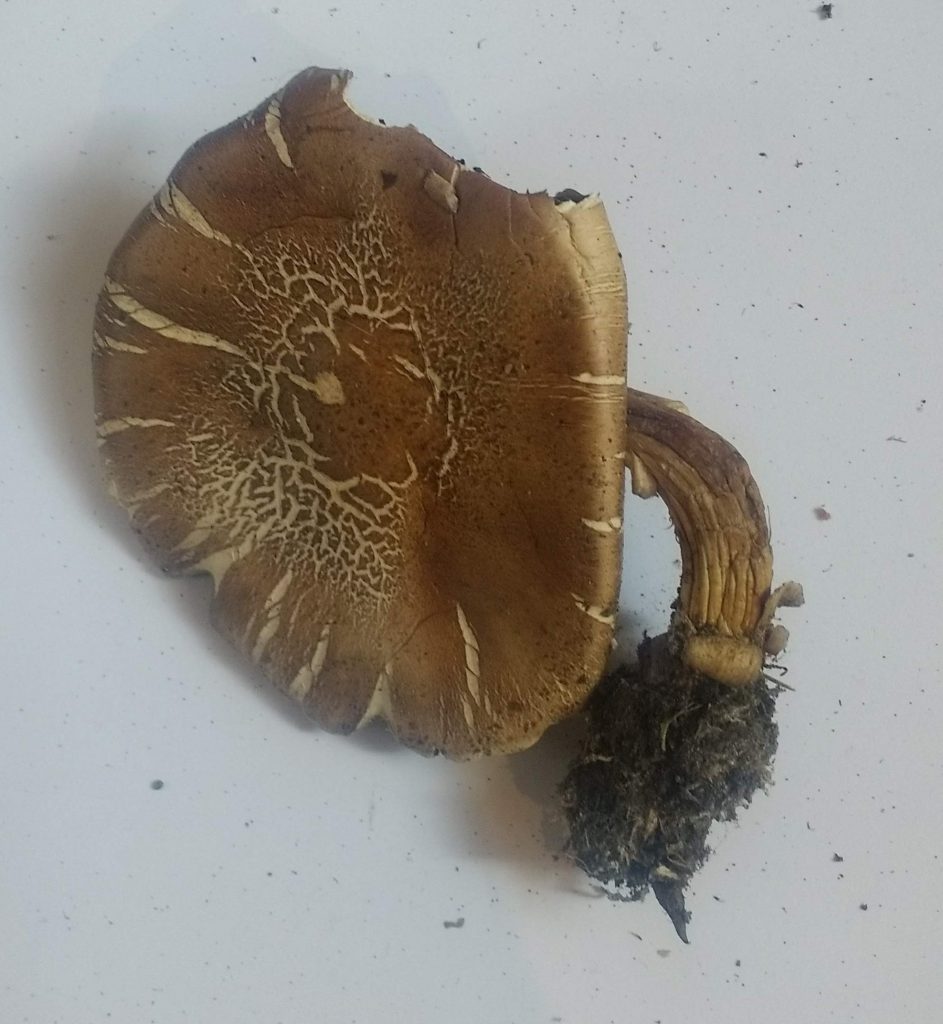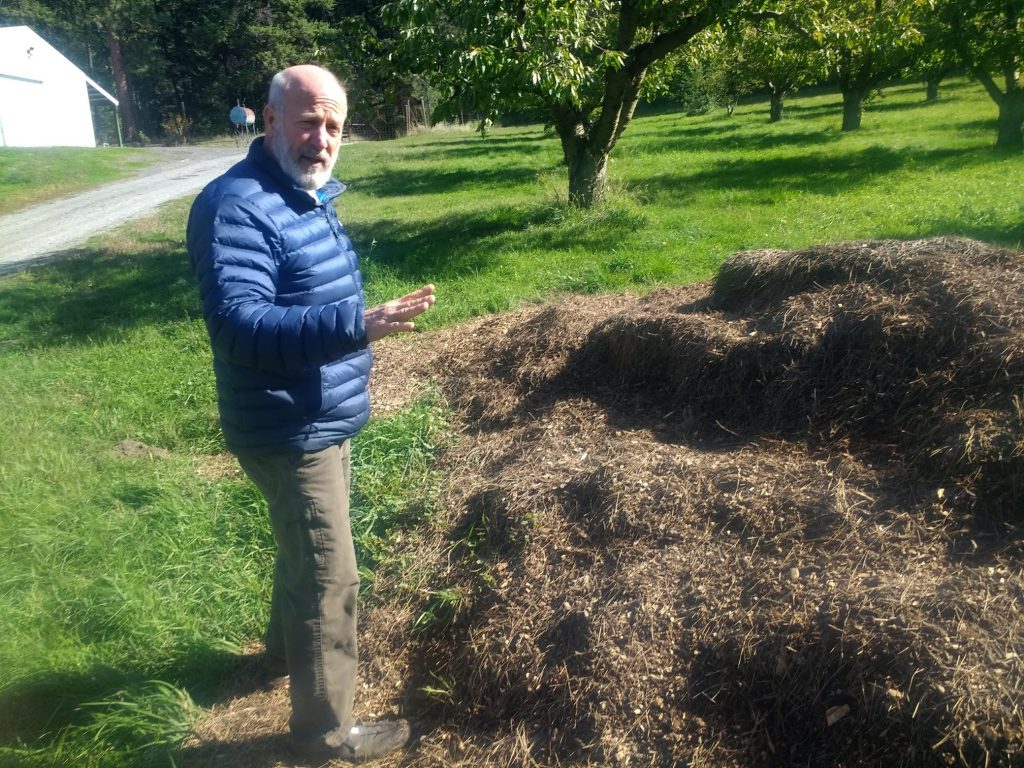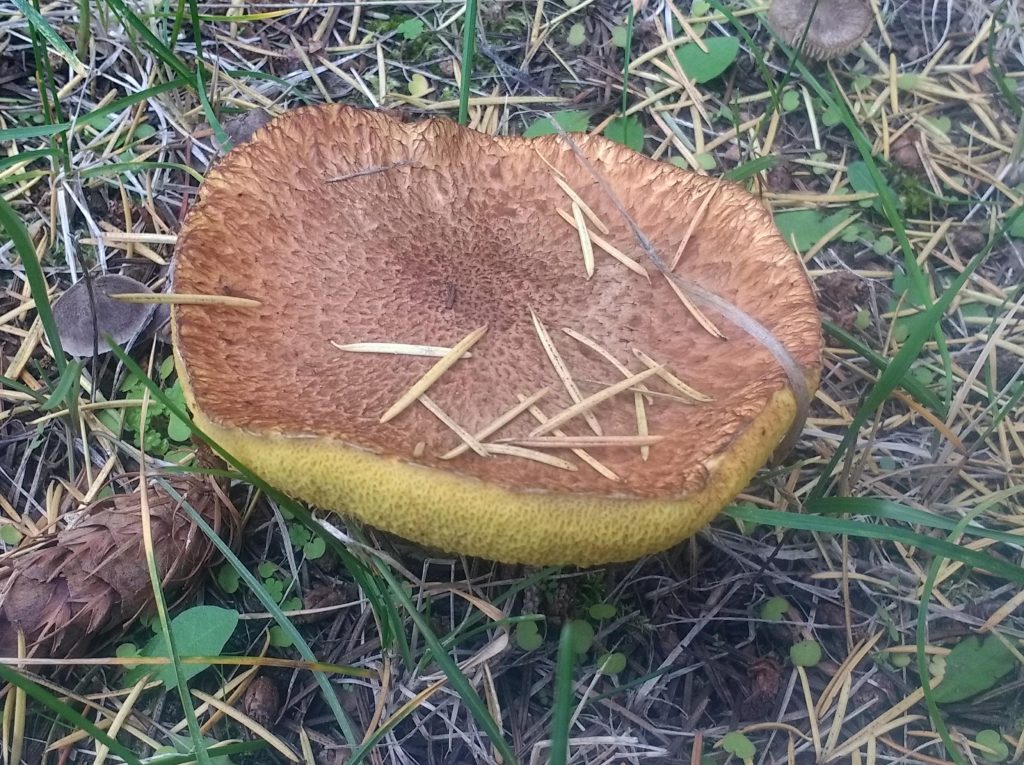The rains came and don’t show any sign of going away. If you are anything like me, you noticed mushrooms popping up all over in this weather. Since I have imported a lot of mulch into my vineyard over the last couple of years, I am seeing more and different mushrooms than ever before. To understand these mushrooms I visited Joe Petrucelli who has done more with mushrooms on his farm, Lakeview Organics, than anyone else I could think of.

Joe told me last year that he had spread some wood chips from cottonwood trees in his orchard. We looked over a swath of chips that had many different kinds of trees and plants in it. I noticed probably the biggest and healthiest clump of comfrey that I had ever seen. Joe told me that it had grown back in just the last couple of weeks. He had to cut it off because it was so tall previously that it was shading a young apple tree. Some of the young trees, on this strip were so loaded with apples that they were bending to the ground. Clearly this was a very fertile strip of land.

But if you looked at the ground itself, it was still covered in wood chips. Grass and weeds were not filling in. But mushrooms were popping up in many places. Whatever was going on here was more than meets the eye. And that is the basic mystery of mushrooms, they are the fruiting body of a network of mycelia, the vegetative part of a fungus, consisting of a network of fine white filaments (hyphae). (Oxford Dictionary) We mostly think of them as either edible or not, psychedelic or poisonous etc. But in most ways they are the tip of the iceberg – so to speak – of a vast underground biochemical process that is transforming wood chips and other cellulose materials into the fertile ground we were seeing the results of on the surface.
So what exactly went on here? Joe gave me a dried King Stropharia mushroom like many that were given to him. To propagate it you first wet some corrugated cardboard. That will loosen it up so you can peel back one layer. Put the dried mushroom inside that layer and fold it back. Then lay the cardboard on the ground and cover it with wood chips. Keep it moist and the mushrooms will start to grow. This was Joe’s technique laying down the chips.
You might not notice them at first since all the action is underground. What you will notice is that if you lay this cardboard and mulch over quack grass and other weeds, they can’t grow back through it. Joe put some 10” plastic lawn edging down in the ground around the outside of the cardboard/mulch layer in his garden to prevent the roots of the quack grass from creeping back in. If you have ever tried to rid an area of quack grass by digging it up and sifting it out to plant a garden, the beauty of this solution will become immediately apparent.

The beauty of the King Stropharia is not so immediate or totally unique, but there is a lot to know. Not only is it delicious cooked in butter. The king stropharia can grow to 20 cm high with a reddish-brown convex to flattening cap up to 30 cm across, the size leading to another colloquial name godzilla mushroom. [The Complete Mushroom Book, Carluccio] It also is known for making a good companion to corn, partly because as a 2006 study, published in the journal Applied and Environmental Microbiology, found the king stropharia to has the ability to attack the nematode Panagrellus redivivus; the fungus produces unique spiny cells called acanthocytes which are able to immobilize and digest the nematodes. [Wikipedia]
So now we are getting in over our head – or more accurately – under our feet. What do nematodes have to do with it? Many of us just know of them as causing damage to crops, but again that is an extremely limited understanding. There are about 40,000 species of nematodes, a kind of flatworm, that inhabit every area of the land and sea. “About 90% of nematodes reside in the top 15 cm of soil… Nematodes can effectively regulate bacterial population and community composition — they may eat up to 5,000 bacteria per minute. Also, nematodes can play an important role in the nitrogen cycle by way of nitrogen mineralization.” [Nyle C. Brady & Ray R. Weil (2009). Elements of the Nature and Properties of Soils]

As it turns out some nematodes can eat fungi, others can be eaten by fungi and others can eat other nematodes. It goes on and on. Not only King Stropharia but all mushrooms and apparently nematodes interact with the soil in multiple ways.

Wanting to stick to the role of fungus in the soil, I called USFS soil biologist Sarah Brame. She confirmed that mycelium can stretch for miles under the forest floor. Their super power is that they excrete enzymes that can break down the complex molecules in wood. Bacteria can’t normally do that. They release sugars which feed bacteria and when fungi die, they also become food for bacteria. Fungi feed off of roots. Sometimes this parasitic relationship is harmful to the roots. But more often than not it is beneficial. Mycrorrhizal fungi bring water, minerals and other nutrients to the root. In exchange they get sugar manufactured in the leaves of the tree. [Mycorrhizal Fungi and Plants – NYBG.org]
About 30% of fungi are mycorrhizal and help roots do their job. Not all fungi are mushrooms. [www.waldwissen.net] Yeast is a member of the fungi family. If you have made bread, wine or cheese, you have seen how quickly fungi spring into action with a little moisture and warmth. But all mushrooms are fungi. They can react quickly to soaking rain and moist mulch. So the next time you see mushrooms popping up don’t just think of them as a possible dinner. They might be helping other possible dinners grow.
